Lesotho Flag Meaning
Three horizontal stripes of blue, white, and green with a black traditional Basotho hat (mokorotlo) centered on the white stripe, representing peace, rain, prosperity, and the cultural heritage of this mountain kingdom completely surrounded by South Africa.
- Continent
- Africa
- Adopted
- 2006
- Ratio
- 2:3
- Colors
- blue, white, green, black
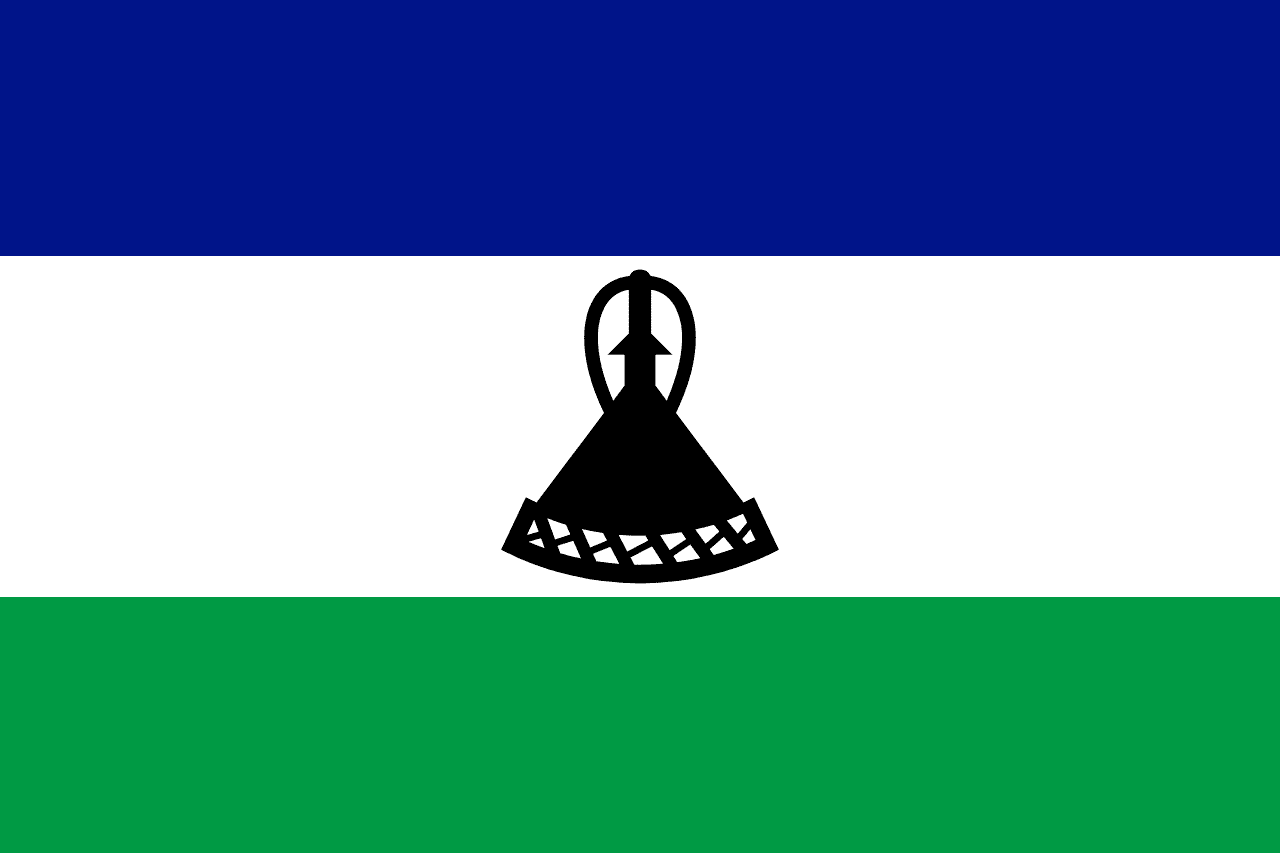
Symbolism
Blue Stripe: Represents the sky and rain, which are vital for this mountainous agricultural country. Blue also symbolizes peace and the hope for a stable future in the 'Kingdom in the Sky.'
White Stripe: Symbolizes peace, purity, and the snow that covers Lesotho's mountains in winter. Also represents the desire for harmony and unity among the Basotho people.
Green Stripe: Represents the fertile land, agriculture, and the lush vegetation of Lesotho's valleys and lowlands, symbolizing prosperity and the country's agricultural heritage.
Black Mokorotlo Hat: The traditional Basotho hat represents the cultural heritage and identity of the Basotho people, symbolizing wisdom, dignity, and the unique traditions that distinguish Lesotho from its neighbors.
Mountain Kingdom Identity: The overall design reflects Lesotho's identity as the 'Kingdom in the Sky,' the only country in the world where every point of territory is above 1,000 meters in elevation.
History
- 1820s-1830s: King Moshoeshoe I united various Basotho tribes and established the Kingdom of Lesotho, creating a strong national identity that would survive colonial pressures.
- 1868: Lesotho became a British protectorate (Basutoland) to protect against Boer expansion, maintaining internal autonomy while using British colonial symbols.
- October 4, 1966: Lesotho gained independence from Britain as a constitutional monarchy under King Moshoeshoe II, adopting its first national flag with blue, white, and green stripes.
- January 20, 1987: Following a military coup, Lesotho adopted a new flag featuring traditional weapons (shield, spear, and knobkerrie) reflecting the military government's emphasis on strength and defense.
- 1993: Democracy was restored in Lesotho, but the military-era flag remained in use for over a decade despite calls for change to reflect peaceful governance.
- October 4, 2006: On the 40th anniversary of independence, Lesotho adopted the current flag featuring the traditional mokorotlo hat, symbolizing a return to cultural heritage and peaceful values.
- 2006-Present: The flag has represented Lesotho's commitment to peace, cultural pride, and democratic governance in this unique mountain kingdom.
Trivia
- Lesotho is one of only three countries in the world that are completely surrounded by another country (the others being Vatican City and San Marino).
- The mokorotlo hat on the flag is inspired by the distinctive conical straw hats traditionally worn by Basotho herdsmen in the mountains.
- Lesotho is the only country in the world where every point of territory is above 1,000 meters (3,281 feet) in elevation, earning it the nickname 'Kingdom in the Sky.'
- The flag represents the only country in Southern Africa that was never conquered during the colonial period, maintaining its independence under British protection.
- Lesotho's flag changed three times (1966, 1987, 2006), reflecting the country's political transitions from independence through military rule to restored democracy.
- The flag flies over the Katse Dam, part of the Lesotho Highlands Water Project that supplies water to South Africa and generates revenue for Lesotho.
- Traditional Basotho blankets often feature patterns that echo the flag colors, making the national colors part of everyday cultural expression.
- The flag represents a country where Sesotho is spoken by virtually the entire population, making it one of Africa's most linguistically homogeneous nations.
- Lesotho's flag appears on the country's loti currency alongside the South African rand, which is also legal tender due to the customs union between the countries.
- The mokorotlo hat symbol connects the modern flag to King Moshoeshoe I, the founder of the Basotho nation, who was known for his diplomatic wisdom.
- Snow falls regularly in Lesotho's highlands, making it one of the few African countries where snow is common, reflected in the white stripe of the flag.
- The flag represents a country where about 40% of the population works in South Africa as migrant laborers, highlighting the economic interdependence.
- Lesotho's flag appears at SADC meetings, where the country plays an active role in Southern African regional development despite its small size.
- The Maloti Mountains, represented by the flag's symbolism, contain some of the highest peaks in Southern Africa and are popular for hiking and tourism.
- The flag flies over Maseru, the capital, which sits right on the border with South Africa, symbolizing Lesotho's unique geographic position as an enclave nation.
Related Countries
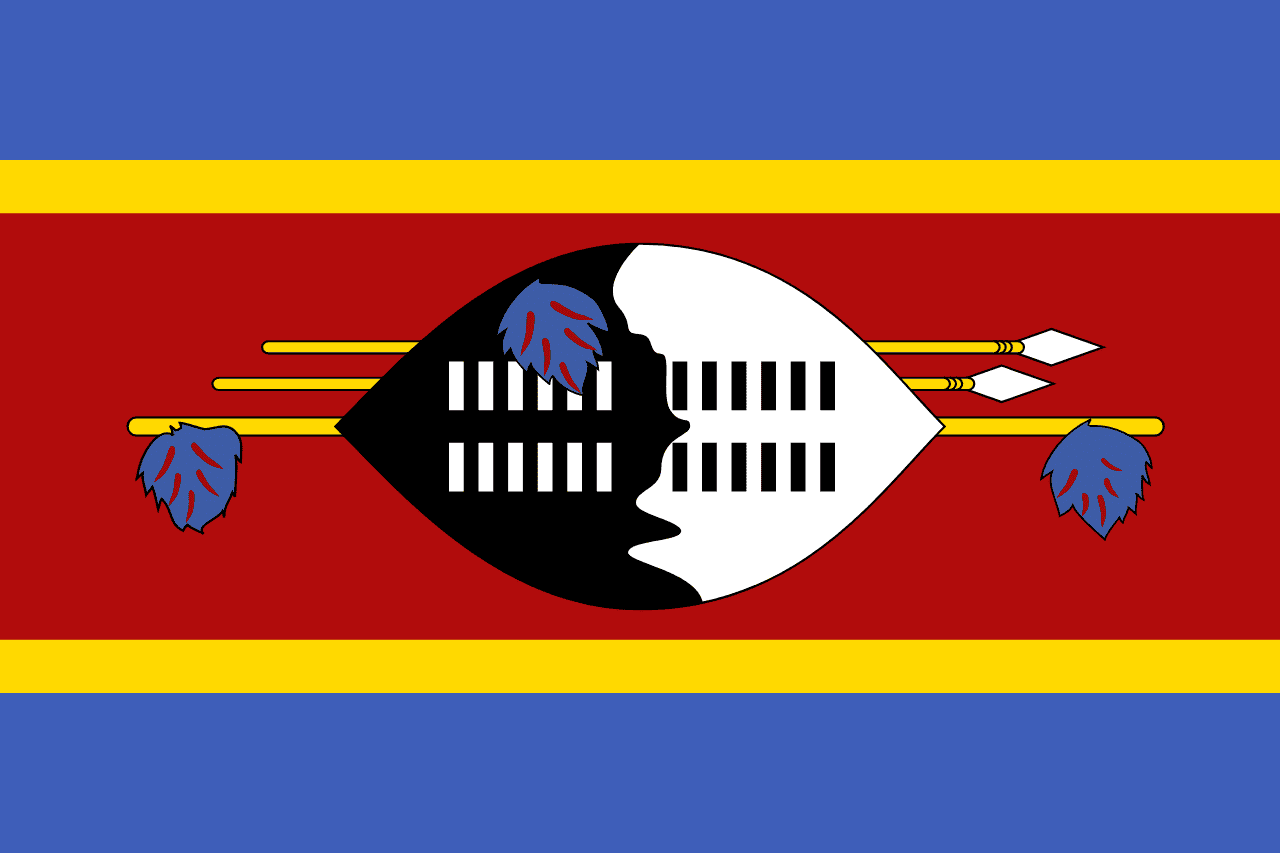
Eswatini
Africa
Five horizontal stripes of blue, yellow, red, yellow, and blue with a traditional Swazi shield and two spears overlaid on the center red stripe, representing peace, mineral wealth, past struggles, and the protection of the kingdom.
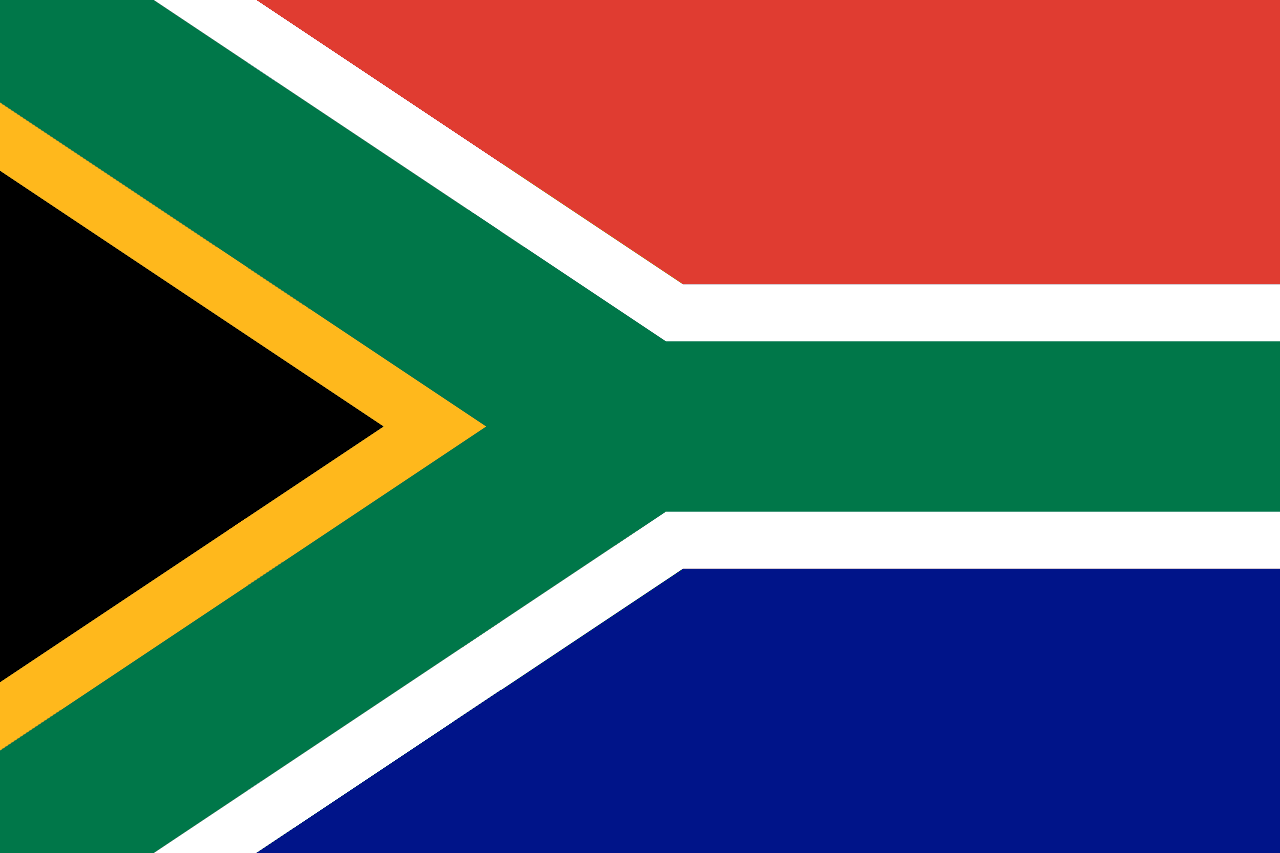
South Africa
Africa
A Y-shaped design with six colors converging toward the flag pole, representing the convergence of diverse elements in South African society and the country's path forward as a unified nation after the end of apartheid and the transition to democracy.
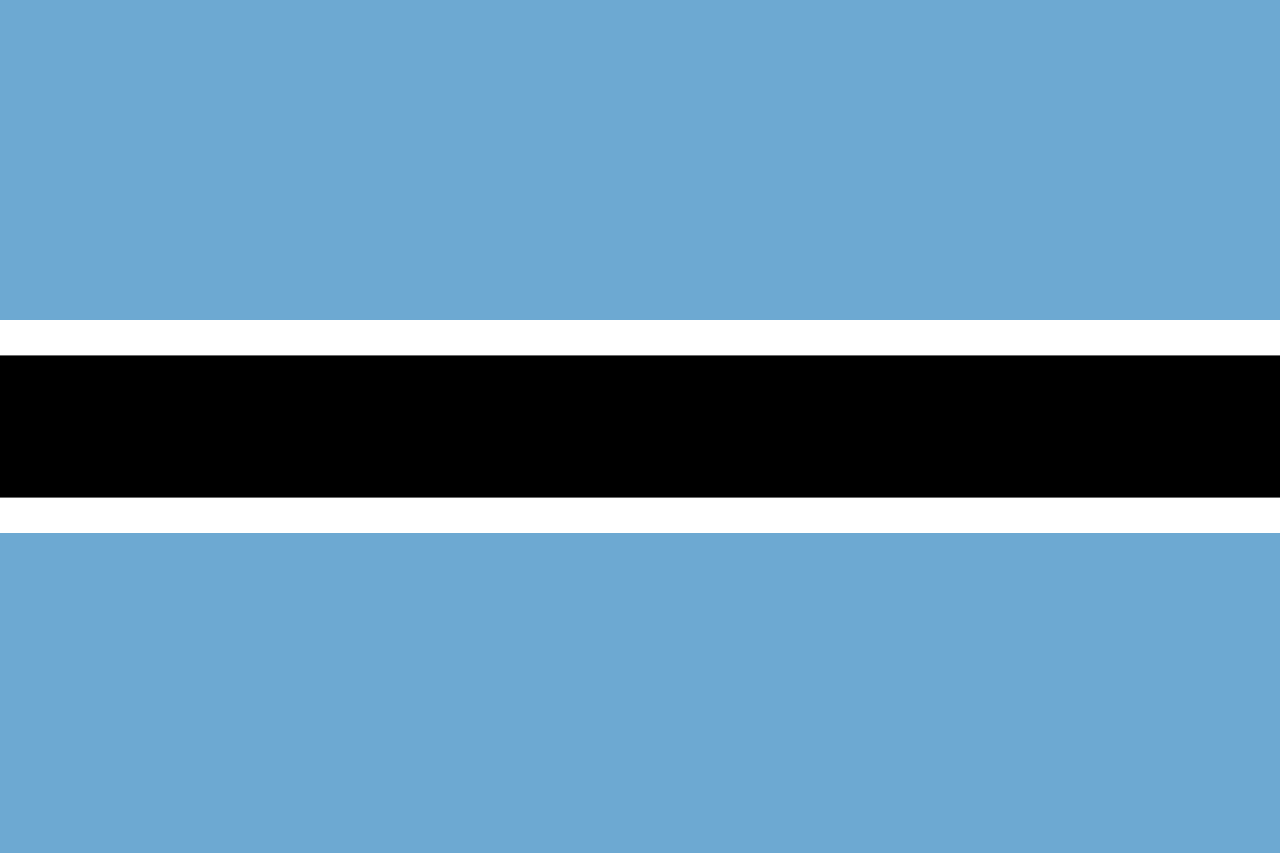
Botswana
Africa
Light blue field with a central black horizontal stripe bordered by thin white stripes, representing the life-giving rains, racial harmony, and the zebra that symbolizes the coexistence of black and white people in peace.
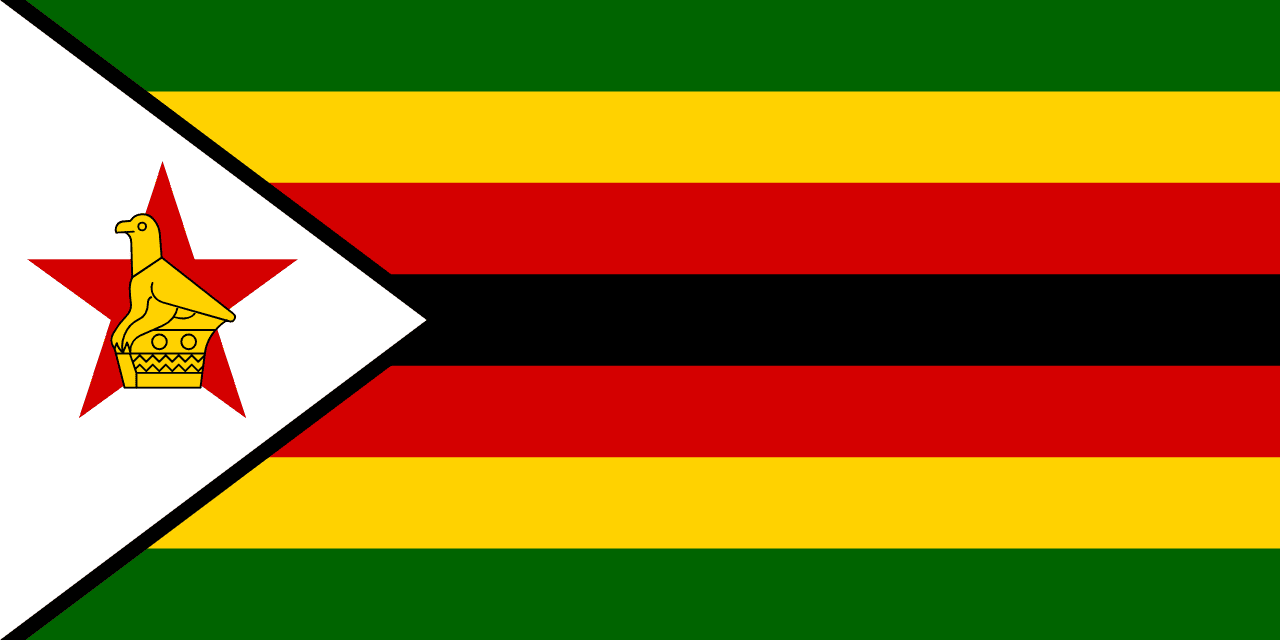
Zimbabwe
Africa
Seven horizontal stripes alternating green, yellow, red, black, red, yellow, green with a white triangle at the hoist containing a red five-pointed star and the Zimbabwe Bird, representing the nation's agricultural wealth, mineral resources, blood shed for independence, the African people, peace, and the ancient civilization of Great Zimbabwe.
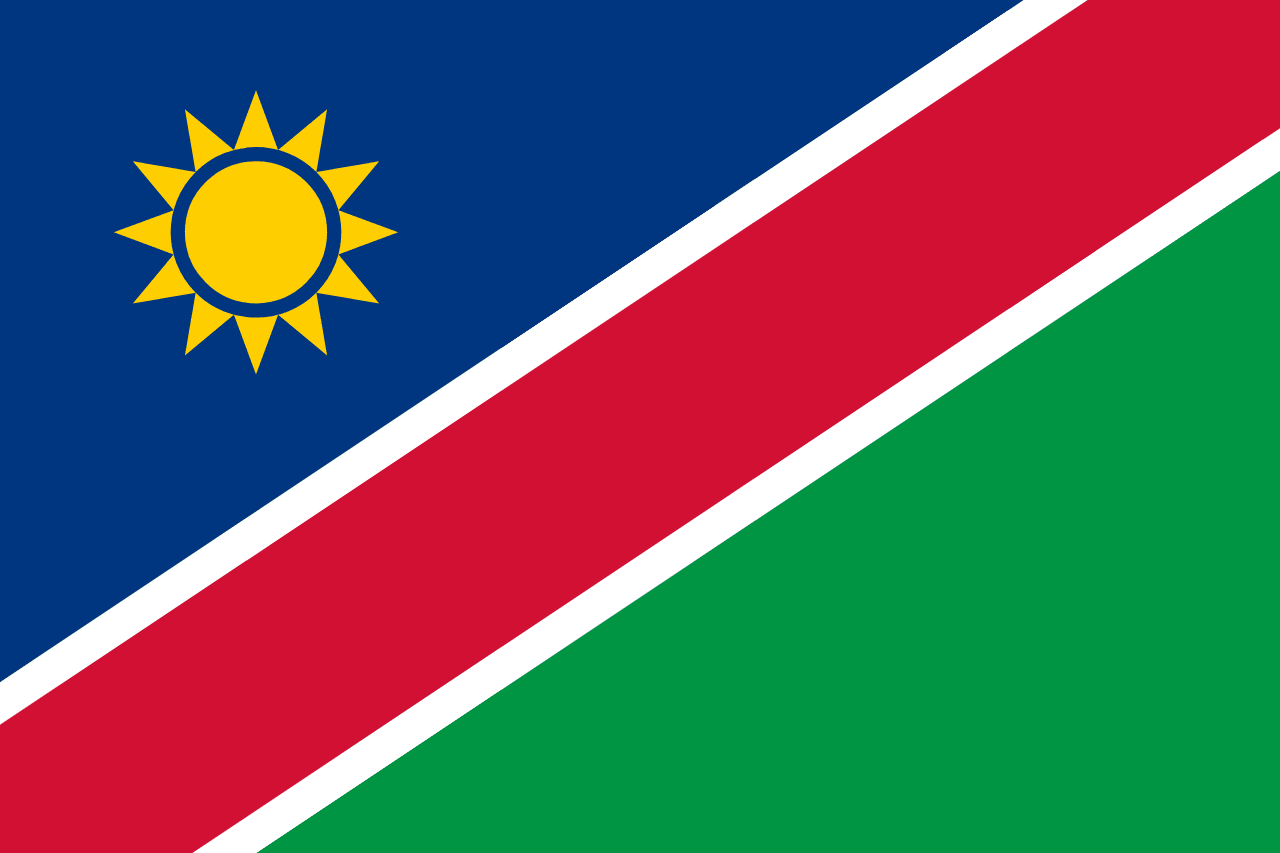
namibia
Africa
A diagonal tricolor divided from the lower hoist to upper fly by a red band with white borders, with blue in the upper hoist containing a golden sun, and green in the lower fly. The design symbolizes Namibia’s land, people, and resources.
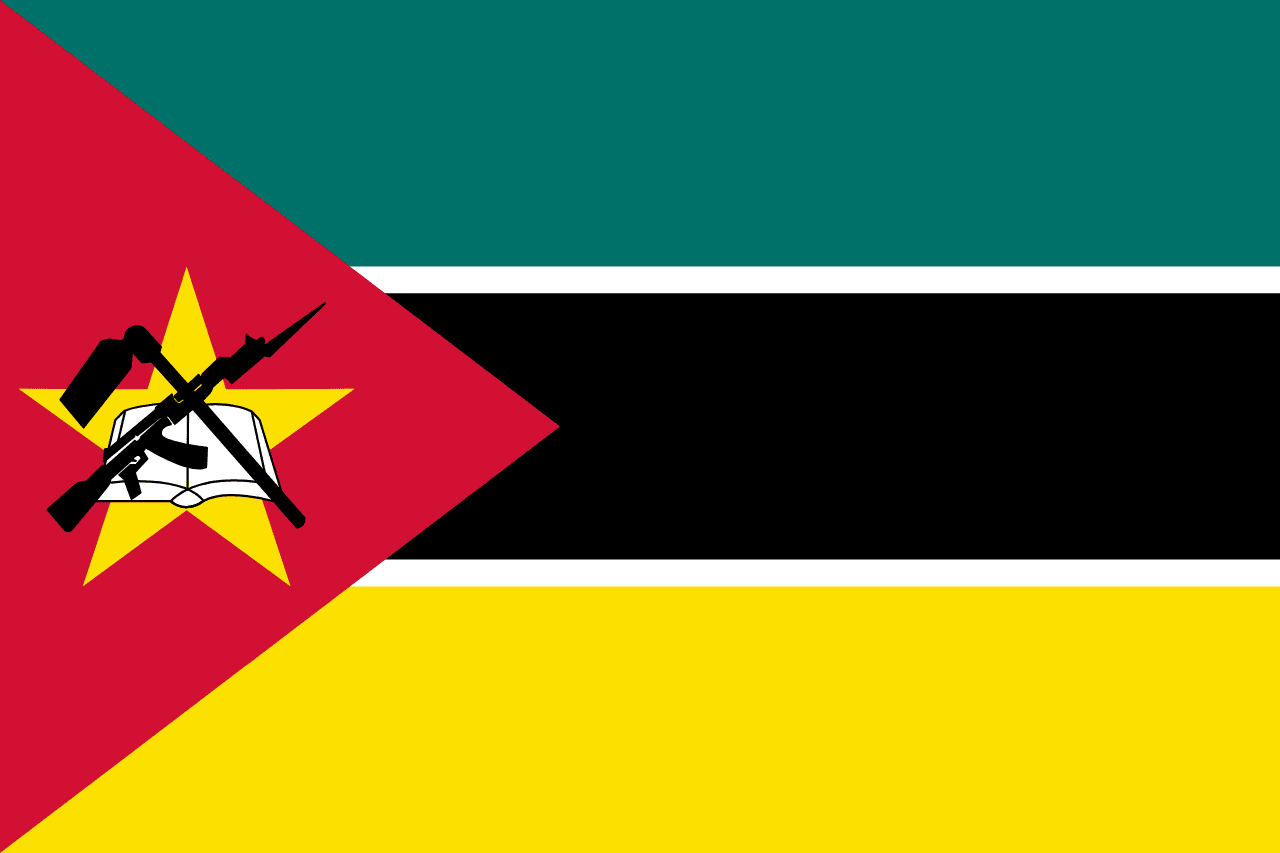
Mozambique
Africa
A horizontal tricolor of green, black, and yellow, separated by white fimbriations, with a red triangle at the hoist bearing a yellow star, a book, a hoe, and an AK-47 with bayonet. The flag uniquely features a modern weapon as a national symbol.